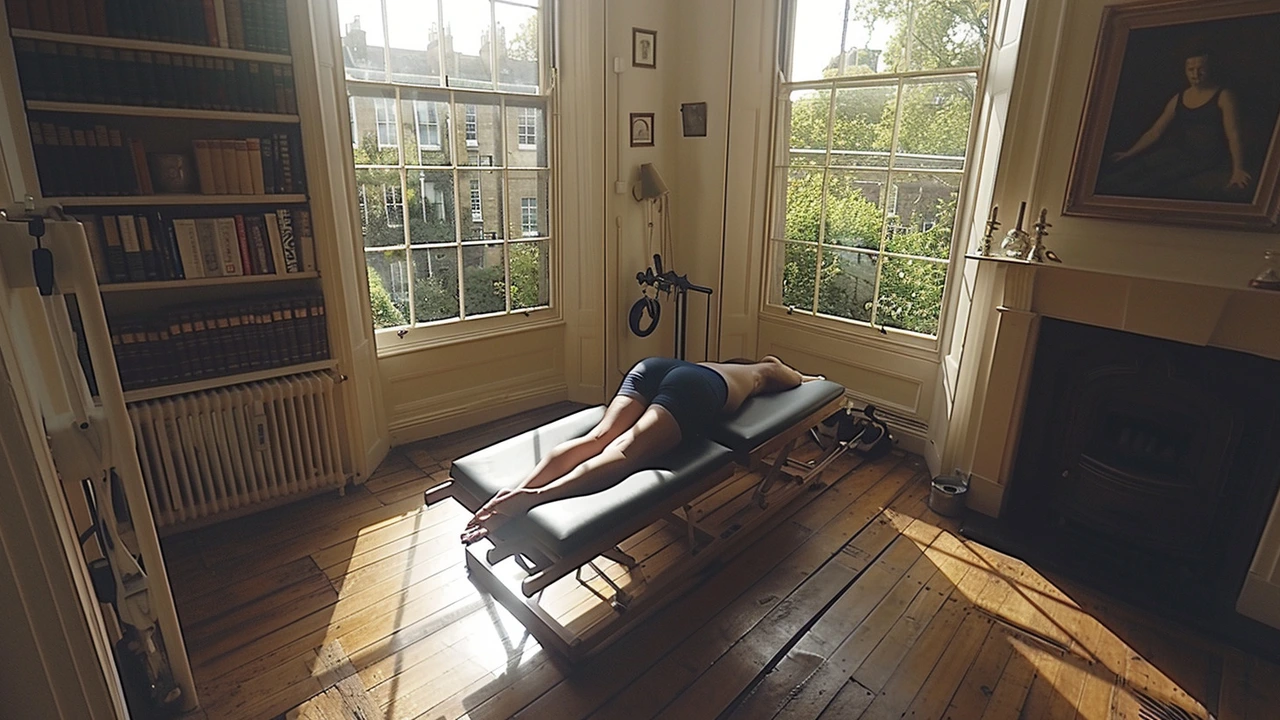
Understanding Fascia: The Hidden Key to Enhanced Movement
In the realm of body conditioning, fascia stretching emerges as a game-changer, yet many of us might not be fully aware of its significance. Let's shed some light on what fascia exactly is. Fascia is a network of connective tissues that wraps around each of our muscles, bones, nerves, and organs, holding them in place while providing a framework that supports our body structure. This intricate system plays a pivotal role not just in our movement, but in our overall well-being.
Now, you might wonder, if it's so crucial, why isn't fascia talked about more often? Well, it's only recently that the fitness and medical communities have begun to recognize its importance. Studies have shown that well-maintained fascia can significantly improve our mobility, enhance recovery from workouts, and even reduce pain. For anyone looking to elevate their Pilates routine, paying attention to fascia is a step in the right direction.
Integrating Fascia Stretching into Your Pilates Routine
Integrating fascia stretching into Pilates isn't about doing entirely different exercises but about enhancing the way you perform your existing routine. It involves slow, sustained stretches that help release and lengthen the fascia, as opposed to the more dynamic or ballistic stretches you might be used to. Incorporating these stretches into your Pilates sessions can lead to a notable improvement in flexibility and muscle function.
Start by focusing on areas that are typically tight and could benefit from extra attention. The hips, shoulders, and back are common areas where fascia can become restricted. Incorporate stretches that target these areas into your routine, paying close attention to the sensations you feel. It's not about pushing to the point of pain but gently encouraging the fascia to lengthen and release.
The Benefits of Combining Fascia Stretching and Pilates
The synergy between fascia stretching and Pilates brings forth a multitude of benefits. Firstly, it can lead to improved flexibility, which is a core component of Pilates. By working on the fascia, you're enabling your muscles to stretch and contract more efficiently, which translates to a greater range of motion during your Pilates exercises. But it doesn't stop there; this combination also promotes better circulation, reduced injury risk, and quicker recovery times.
Moreover, focusing on fascia can enhance body awareness. You become more attuned to how your body moves, where it holds tension, and how it feels during different exercises. This heightened awareness can improve your Pilacy practice, making it more effective and enjoyable.
Practical Tips for Incorporating Fascia Stretching into Your Routine
So how do you get started? First, it's essential to warm up your muscles before diving into fascia stretching. A gentle warm-up ensures your body is ready and reduces the risk of injury. Next, select a few fascia stretches to incorporate into your Pilates routine. Aim for stretches that target multiple areas, providing a comprehensive approach to fascia stretching. Remember to hold each stretch for at least 30 to 60 seconds to allow the fascia to release effectively.
Listen to your body throughout the process. Fascia stretching should be challenging but never painful. If you experience discomfort, ease up and try a milder stretch. Over time, as your fascia becomes more supple, you'll be able to deepen your stretches and, by extension, enhance your Pilates workouts.
The Science of Stretch: How Fascia Stretching Works
Delving deeper into the science, fascia stretching works by applying gentle, sustained tension to the fascia, encouraging it to elongate and release. This process can help break up adhesions and scar tissue that form in the fascia due to injury, inactivity, or repetitive motion, leading to improved flexibility and movement.
One fascinating aspect of fascia is its ability to 'reorganize' under stress, a phenomenon known as 'thixotropy.' This quality allows the fascia to become more fluid-like when subjected to slow, steady pressure, facilitating a deeper stretch and greater mobility. It's this scientific basis that makes fascia stretching so effective, especially when combined with the precision and control of Pilates.
Advanced Techniques for Seasoned Practitioners
For those who have been practicing Pilates for some time and are looking to further enhance their routine, advanced fascia stretching techniques offer a new challenge. Techniques such as myofascial release, where you use tools like foam rollers or massage balls to apply pressure to specific points of the fascia, can provide targeted relief and improve flexibility. Incorporating these tools into your routine can amplify the efFects of your stretches, providing a deeper release of tension and an increase in mobility.
Keep in mind, however, that advanced techniques should be approached with caution and ideally under the guidance of a professional. This ensures that you're applying the correct amount of pressure and targeting the right areas without risking injury.
Conclusion: Embracing the Power of Fascia Stretching in Pilates
In conclusion, fascia stretching presents a potent tool for those looking to enhance their Pilates routine. By understanding the role of fascia in our body's movement and integrating targeted stretches into your practice, you can experience significant improvements in flexibility, body awareness, and overall wellbeing. The journey to a more supple and functional body starts with a stretch, and fascia stretching might just be the key to unlocking your Pilates potential.
Write a comment